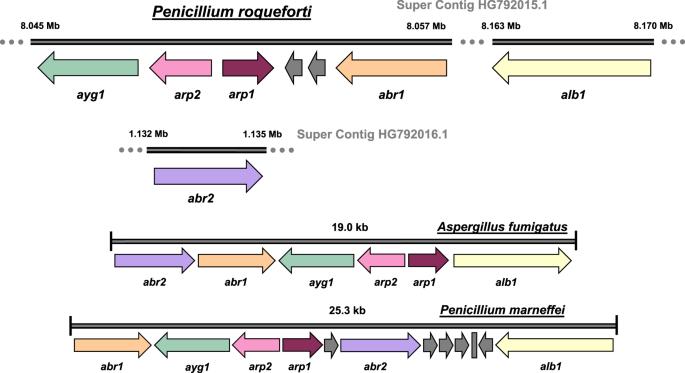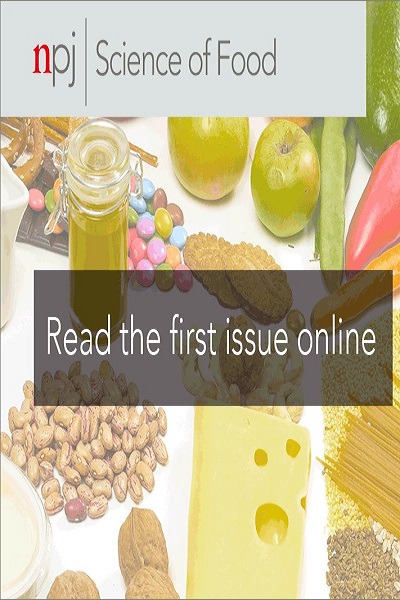蓝奶酪真菌 Penicillium roqueforti 中的新旧色彩
IF 6.3
1区 农林科学
Q1 FOOD SCIENCE & TECHNOLOGY
引用次数: 0
摘要
全世界都在使用青霉生产蓝纹奶酪。蓝绿色源自真菌生长过程中形成的色素孢子。利用生物信息学、定向基因缺失和异源基因表达相结合的方法,我们发现色素的形成是由于 DHN-黑色素生物合成途径。系统性地删除该途径的基因会改变孢子的颜色,产生从白色到黄绿色再到红粉棕色的表型,这证明了产生新的彩色菌株的潜力。虽然在一些基因缺失的菌株中,洛可可碱 C 的含量发生了变化,但途径中断并没有对霉酚酸的产生产生一致的影响。重要的是,与蓝色奶酪风味相关的甲基酮含量没有受到影响。紫外线诱导的颜色突变体可用于食品生产。获得了一系列颜色,并成功地将某些表型映射到通路基因突变上。随后,选定的颜色突变体被用于奶酪生产,并产生了预期的新颜色,没有出现霉菌毒素升高的情况,为未来奶酪生产提供了令人兴奋的应用前景。本文章由计算机程序翻译,如有差异,请以英文原文为准。

New colours for old in the blue-cheese fungus Penicillium roqueforti
Penicillium roqueforti is used worldwide in the production of blue-veined cheese. The blue-green colour derives from pigmented spores formed by fungal growth. Using a combination of bioinformatics, targeted gene deletions, and heterologous gene expression we discovered that pigment formation was due to a DHN-melanin biosynthesis pathway. Systematic deletion of pathway genes altered the arising spore colour, yielding white to yellow-green to red-pink-brown phenotypes, demonstrating the potential to generate new coloured strains. There was no consistent impact on mycophenolic acid production as a result of pathway interruption although levels of roquefortine C were altered in some deletants. Importantly, levels of methyl-ketones associated with blue-cheese flavour were not impacted. UV-induced colour mutants, allowed in food production, were then generated. A range of colours were obtained and certain phenotypes were successfully mapped to pathway gene mutations. Selected colour mutants were subsequently used in cheese production and generated expected new colourations with no elevated mycotoxins, offering the exciting prospect of use in future cheese manufacture.
求助全文
通过发布文献求助,成功后即可免费获取论文全文。
去求助
来源期刊

NPJ Science of Food
FOOD SCIENCE & TECHNOLOGY-
CiteScore
7.50
自引率
1.60%
发文量
53
期刊介绍:
npj Science of Food is an online-only and open access journal publishes high-quality, high-impact papers related to food safety, security, integrated production, processing and packaging, the changes and interactions of food components, and the influence on health and wellness properties of food. The journal will support fundamental studies that advance the science of food beyond the classic focus on processing, thereby addressing basic inquiries around food from the public and industry. It will also support research that might result in innovation of technologies and products that are public-friendly while promoting the United Nations sustainable development goals.
 求助内容:
求助内容: 应助结果提醒方式:
应助结果提醒方式:


